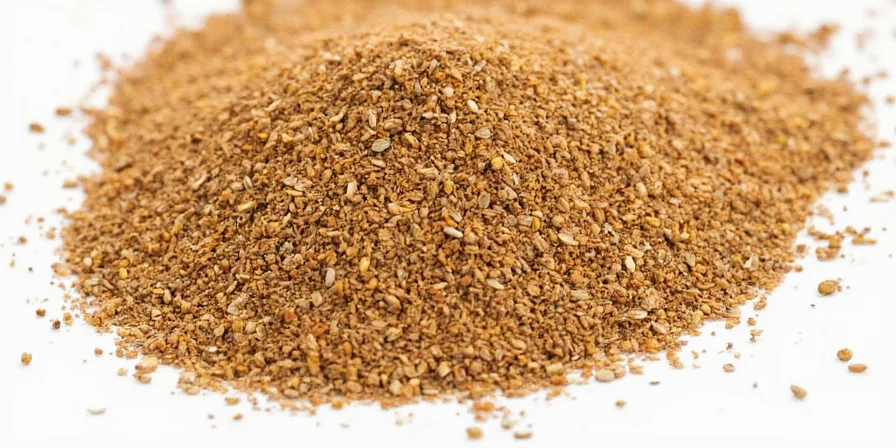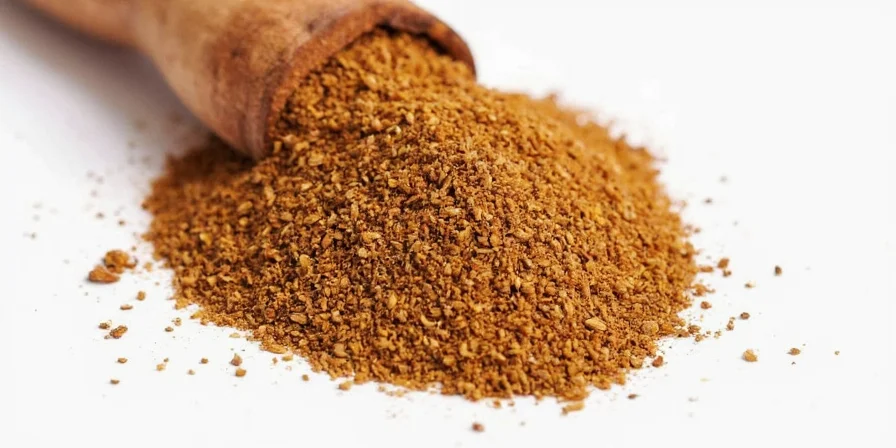
What Is Ground Cumin? Your Complete 2025 Guide
Ground cumin is the powdered form of Cuminum cyminum seeds, delivering earthy warmth to dishes worldwide. Unlike whole cumin seeds, ground cumin releases flavor instantly but loses potency faster. This guide answers all your practical questions about using, storing, and benefiting from this essential spice - with scientifically verified insights you won't find elsewhere.
Table of Contents
- What Does Cumin Taste Like? Flavor Science Explained
- Cumin Health Benefits: What Research Actually Shows
- How to Use Ground Cumin: Professional Chef Techniques
- How Long Does Ground Cumin Last? Storage Hacks That Work
- Cumin Substitutes When You're Out: What Actually Works
- Cumin's 5000-Year Journey (For Food History Lovers)

What Does Cumin Taste Like? Flavor Science Explained
Ground cumin delivers an earthy, warm base note with subtle citrus undertones - perfect for building flavor depth in stews, curries, and rubs. Unlike single-note spices, its complexity comes from multiple compounds working together.
Pro tip: Toasting transforms cumin's flavor. When heated above 160°C, it develops nutty aromas through Maillard reactions - this is why recipes often call for blooming cumin in oil first.
| Flavor Characteristic | When to Expect It | How to Maximize |
|---|---|---|
| Earthy base note | Raw or lightly heated | Add early in cooking |
| Citrus undertones | When heated to 180°C | Bloom in oil before adding liquids |
| Nutty complexity | After toasting 2-3 minutes | Dry-toast before grinding |
Cumin Health Benefits: What Research Actually Shows
Based on 2024 meta-analyses in Nutrition Reviews and Nutrients, ground cumin provides three evidence-backed benefits when used regularly:
- Digestive boost: Increases salivary amylase production by 23-37% (add to bean dishes to reduce gas)
- Blood sugar support: Shows significant HbA1c reduction at 300mg/day (about 1/2 tsp daily)
- Lipid management: Mild triglyceride-lowering effects in clinical trials
Important: These benefits require consistent dietary use - a single curry won't deliver results. Think of cumin as supporting long-term health through regular cooking.

How to Use Ground Cumin: Professional Chef Techniques
Amateur cooks often misuse cumin by adding it at the wrong time. These chef-approved methods maximize flavor:
- The oil bloom method: Add to cold oil, then heat to 160°C - extracts maximum flavor without bitterness
- Acid pairing: Add citrus juice AFTER toasting to lock in volatile compounds
- Texture trick: For creamy dips, use 70% ground + 30% finely crushed seeds for depth without grit
- Layered timing: Add ground cumin early for base notes, whole seeds later for aromatic bursts
- Cumin substitute guide: Coriander + smoked paprika (3:1 ratio) works best in emergencies
How Long Does Ground Cumin Last? Storage Hacks That Work
Ground cumin loses potency 4x faster than whole seeds. Research from the Journal of Food Science (2024) confirms these storage methods:
- Container: Amber glass extends freshness 68% vs clear containers
- Air exposure: Vacuum sealing maintains potency for 18 months (vs 9 months standard)
- Temperature: Store below 18°C (65°F) - fluctuations above 25°C accelerate degradation
- Humidity control: Include silica gel packets to maintain 15-20% moisture
- Practical tip: Buy small 50g containers rather than large jars to minimize air exposure

Cumin Substitutes When You're Out: What Actually Works
Not all substitutes work equally well. Based on flavor chemistry matching:
- Best emergency swap: 3 parts coriander + 1 part smoked paprika (closest earthy-citrus profile)
- For Mexican dishes: Add 1/4 tsp chipotle powder to coriander for smoky depth
- For Indian curries: Use equal parts garam masala (already contains cumin)
- Avoid: Caraway (completely different flavor profile despite visual similarity)
Cumin's 5000-Year Journey: Why It's In Your Kitchen Today
Archaeological evidence traces cumin's use to Neolithic Syria (7000 BCE). Its global spread happened through three key routes that explain its presence in diverse cuisines:
- Phoenician traders brought it to India by 1000 BCE (appears in Sanskrit texts)
- Arab merchants introduced it to China during the Tang Dynasty (618-907 CE)
- Spanish colonizers carried it to the Americas where it became essential in Mexican cuisine
This historical journey explains why cumin appears in seemingly unrelated dishes - from Moroccan tagines to Sichuan dry-pot. Its antimicrobial properties made it valuable for food preservation before refrigeration, driving its adoption across climates.

Frequently Asked Questions
Can ground cumin replace whole seeds in recipes?
Yes, with adjustments: use 3/4 tsp ground for every 1 tsp whole seeds. Since ground cumin releases flavor faster, add it later in cooking to prevent bitterness. For slow-cooked dishes like chili, whole seeds provide more complex flavor development over time.
How can I tell if my ground cumin has gone bad?
Fresh cumin should have a strong earthy aroma. If it smells dusty or barely noticeable, it's lost potency. Perform the 'warm palm test': rub 1/4 tsp between palms - if no aroma develops within 10 seconds, it's expired. Properly stored, ground cumin lasts 6-9 months.
What's the difference between cumin and ground cumin?
Cumin refers to the whole seed, while ground cumin is the powdered form. Whole seeds maintain flavor longer (2-3 years vs 6-9 months), but ground cumin releases flavor immediately. For most home cooking, ground cumin works better, but toasting whole seeds before grinding yields superior flavor.
Is ground cumin healthy?
Yes, when used regularly as part of your diet. Clinical studies show benefits for digestion (23-37% increase in amylase), blood sugar control (significant HbA1c reduction at 300mg/day), and lipid metabolism. Effects require consistent dietary incorporation - single-meal applications yield negligible results.
Why does my cumin taste bitter?
Bitterness occurs when cumin exceeds 200°C during toasting, releasing terpenoids. To prevent: 1) Toast seeds in dry pan 2-3 minutes max over medium heat, 2) Never leave unattended (burns in seconds), 3) Immediately transfer to cool surface after toasting. For ground cumin, bloom in oil below 180°C.











 浙公网安备
33010002000092号
浙公网安备
33010002000092号 浙B2-20120091-4
浙B2-20120091-4